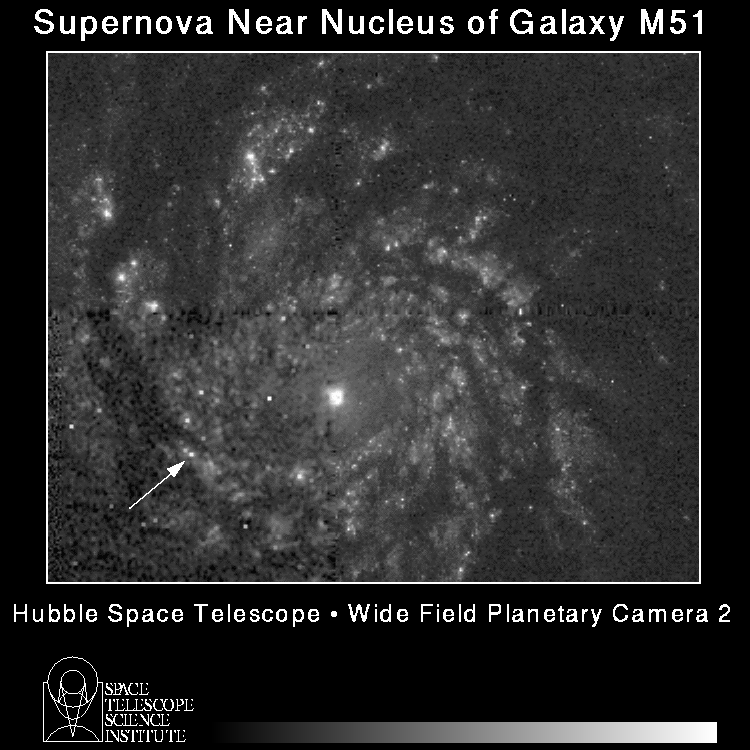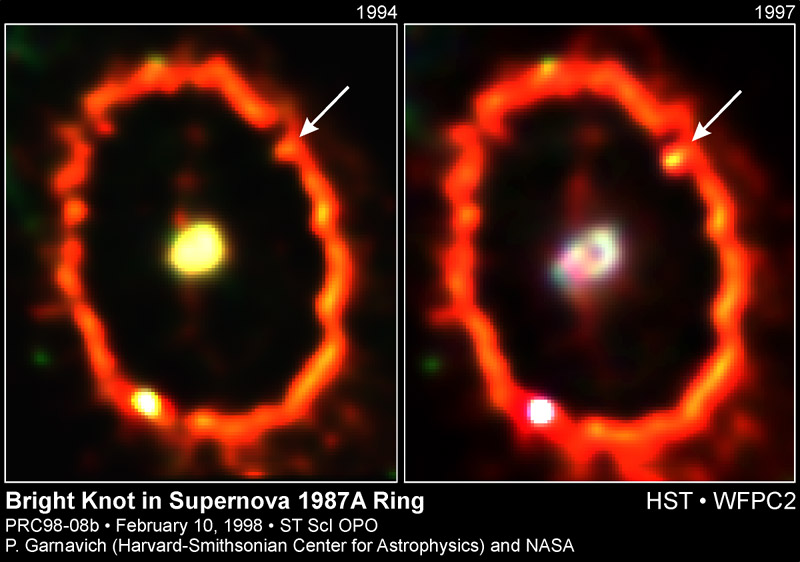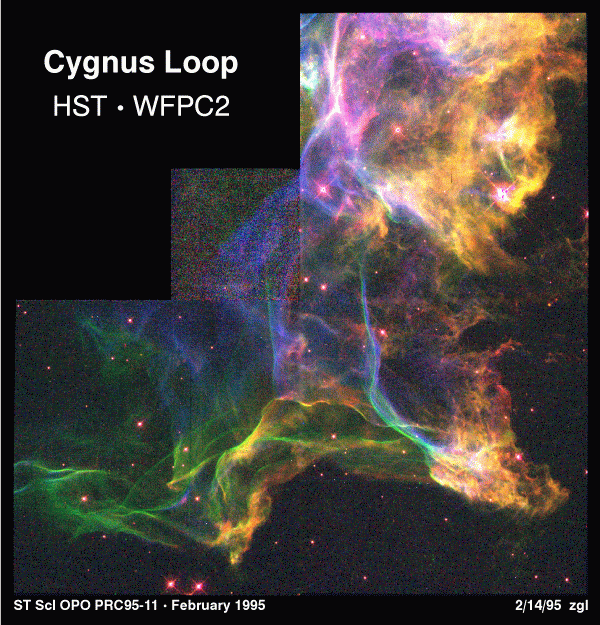
Supernova Pictures


LEFT
This NASA Hubble Space Telescope Wide Field and Planetary Camera 2 image shows the glowing
gas ring around supernova 1987A, as itappeared in 1994. The gas, excited by light from the
explosion, has been fading for a decade
RIGHT
Recent 1997 Hubble telescope observations show a brightening knot on the upper right side
of the ring. This is the site of a powerful collision between an outward moving blast wave
and the innermost parts of the circumstellar ring. The collision heats the gas and has
caused it to brighten in recent months. This is likely to be the first sign of a dramatic
and violent collision that will take place over the next few years, rejuvenating SN1987A
as a powerful source of X-ray and radio emissions.
The white sickle-shaped material in the center is the visible part of the shredded star,
rushing outward at 3,000 kilometers per second, which is heated by radioactive elements
created in the supernova explosion. The bright dot in the lower left is a star,
which is the same direction as SN1987A, but is not physically part of the system.

Cygnus Loop -- "The Aftermath of a Star Blowing Itself Asunder"
This image, taken with the HST's Wide Field and Planetary Camera 2, shows a region of
gas and dust about 2500 light years away in the constellation Cygnus, the Swan (which is
high overhead in late summer). The glowing gas is the result of a shock wave from an
exploding star, or supernova, that occurred about 15,000 years ago. The blast wave is
moving through the cloud, compressing and heating the gas and so is causing it to glow. If
the gas in this image was bright enough to be seen by the naked eye, it would cover an
area in the sky equal to about 6 times the area of the full moon.